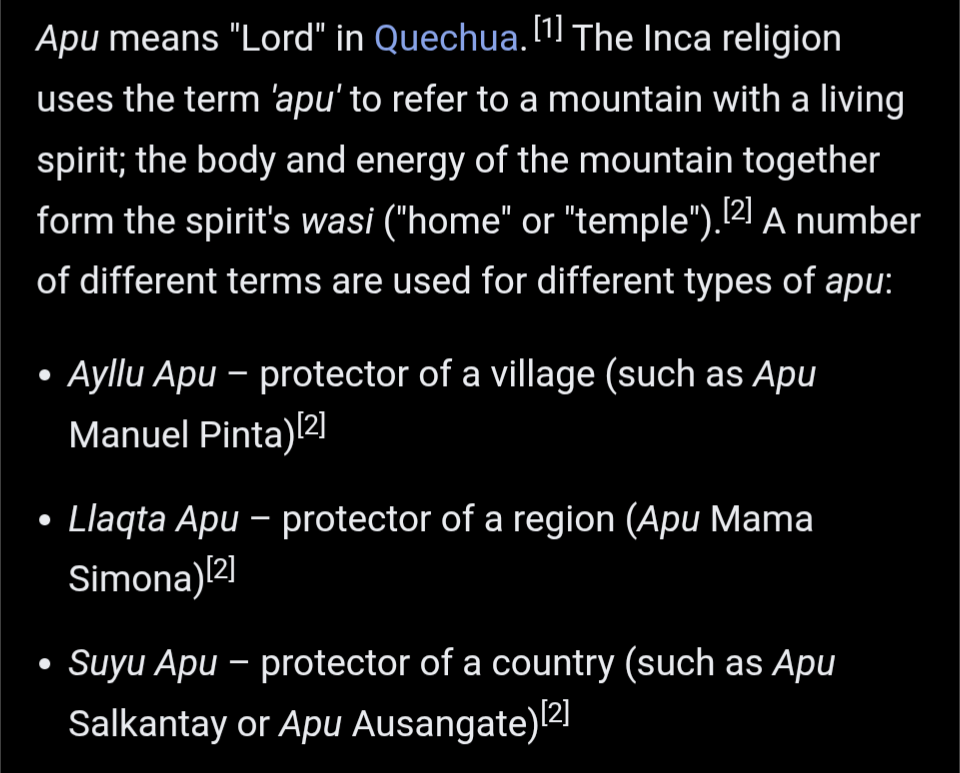Hello, and welcome one more Friday to Tinto Flavour, the happy days in which we take a look at the flavour content of Europa Universalis V!
Today, we will take a look at the flavour content for the Inca! Let’s start without further ado:
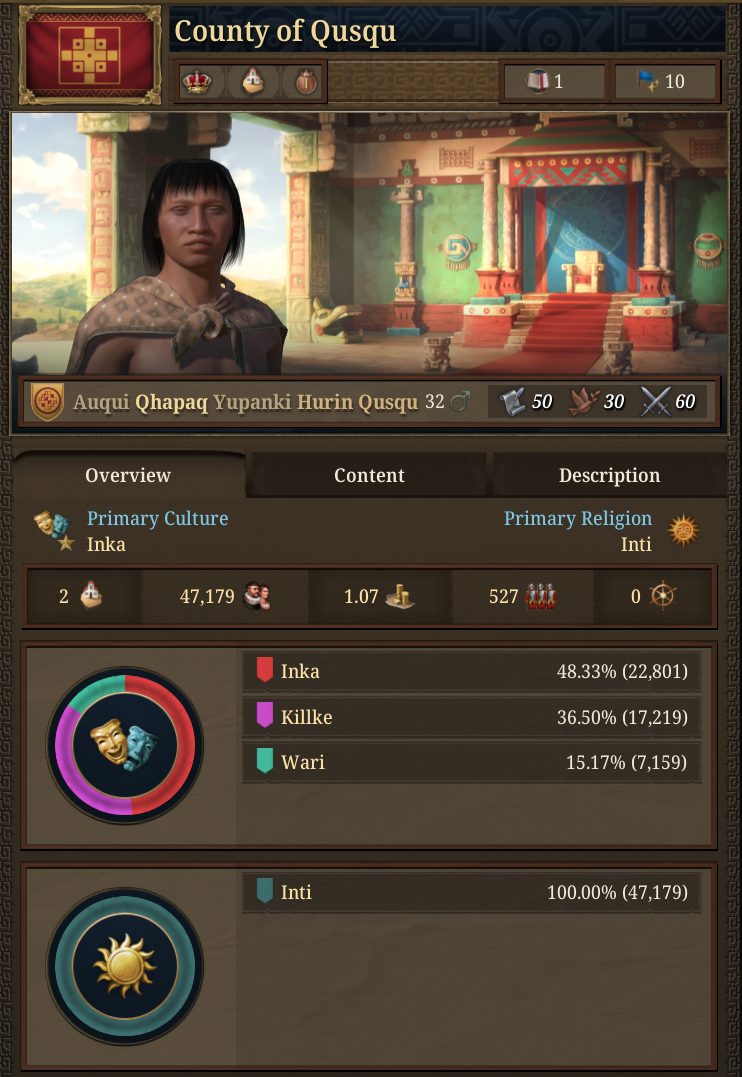
As usual, please consider all UI, 2D and 3D Art as WIP.
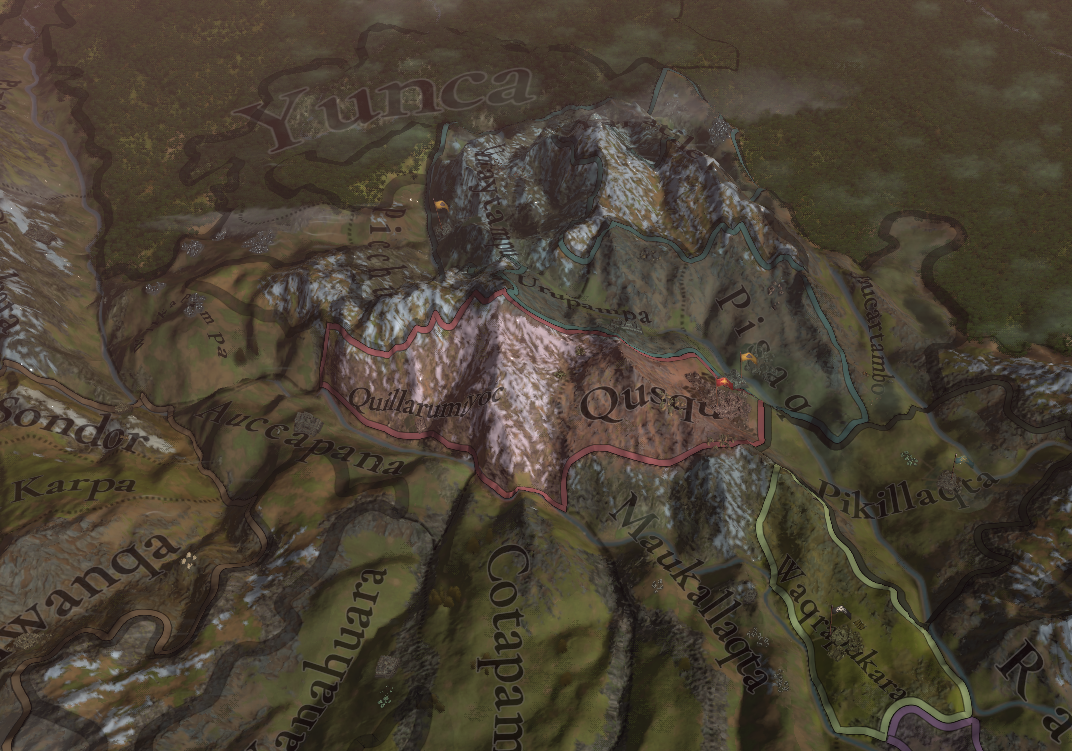
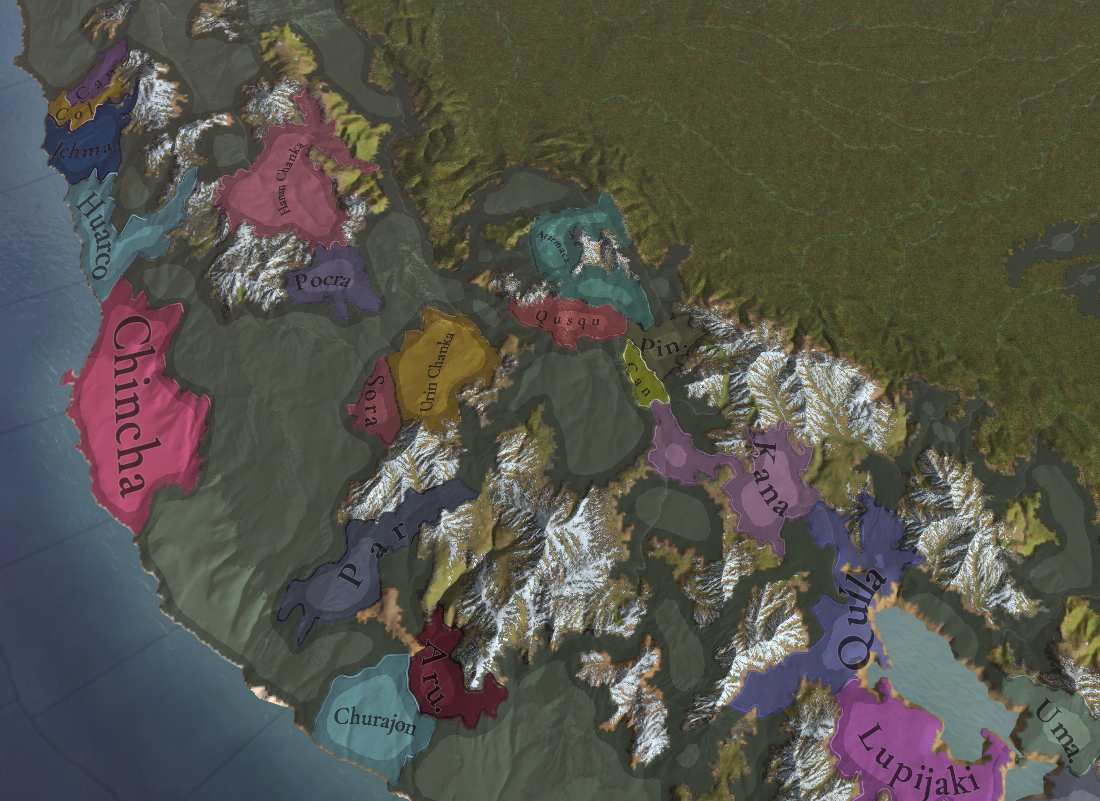
Qusqu has a quite unique start, in the middle of the Andes.
Let’s start by taking a look at the Estates panel, as usual. The countries of the region, including Qusqu, start with a unique government reform:
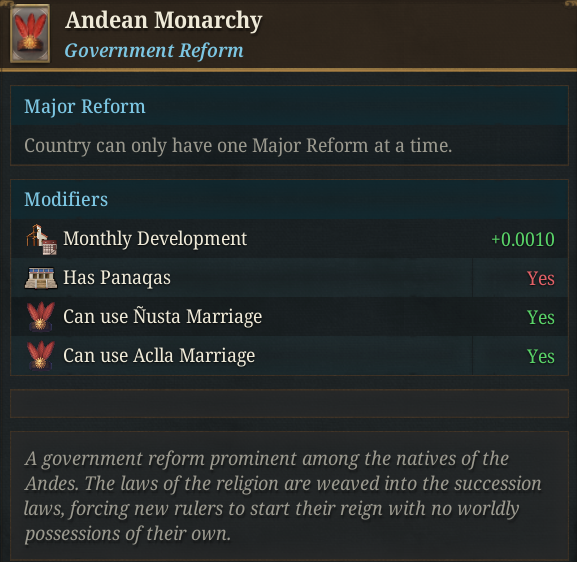
As you see, it unlocks a bunch of mechanics. The first is the Panaqas:

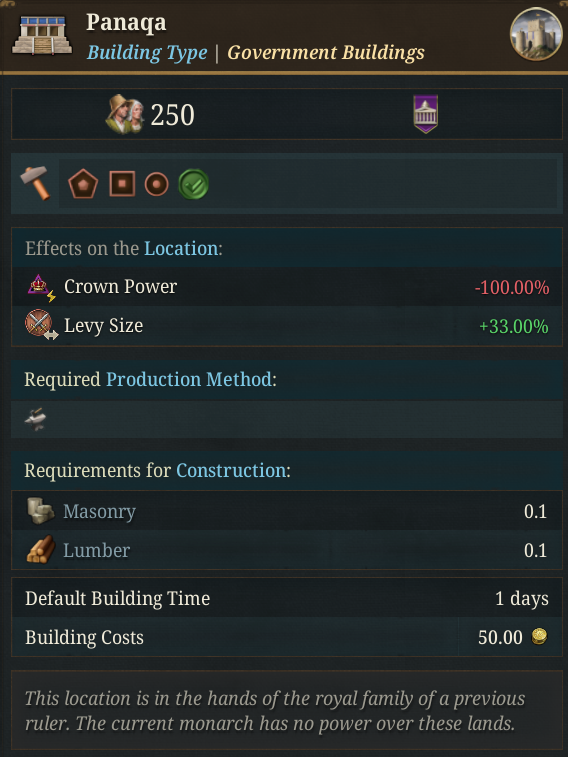
Numbers are subject to balance and change, as usual.
They are instantly built at the death of the ruler, by this event:
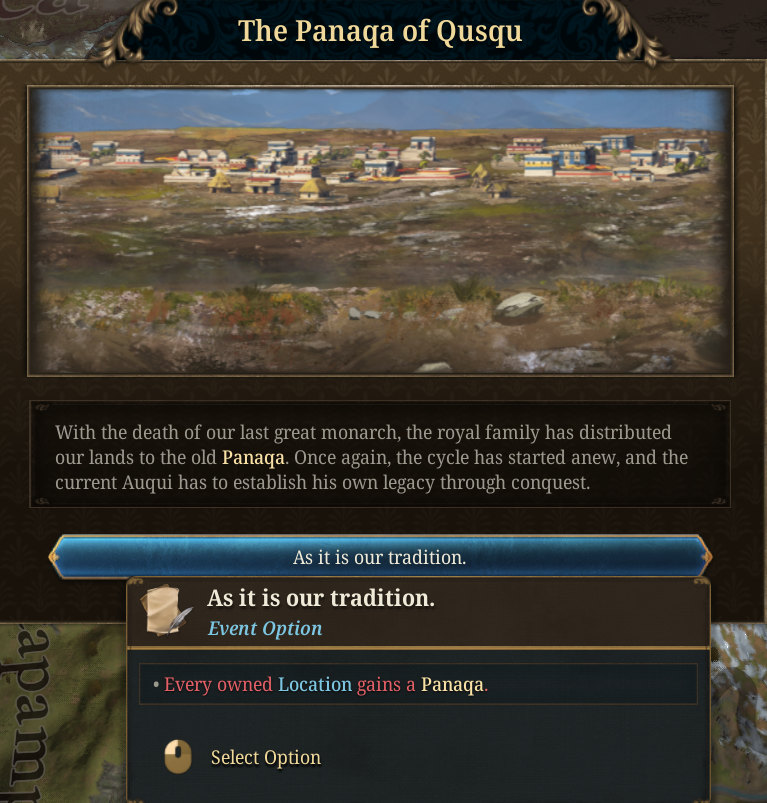
As you see, Panaqas are a double-edged sword: they increase the Levy Size, but their cost is removing the Crown Power from the location they’re built in. Therefore, they might potentially be very good buildings for locations distant from the capital, where you have low control, while being very negative for those locations close to your capital. They can be removed, though, by paying a cost of 10 Legitimacy.
The other two Actions unlocked by the Andean Monarchy reform are connected:

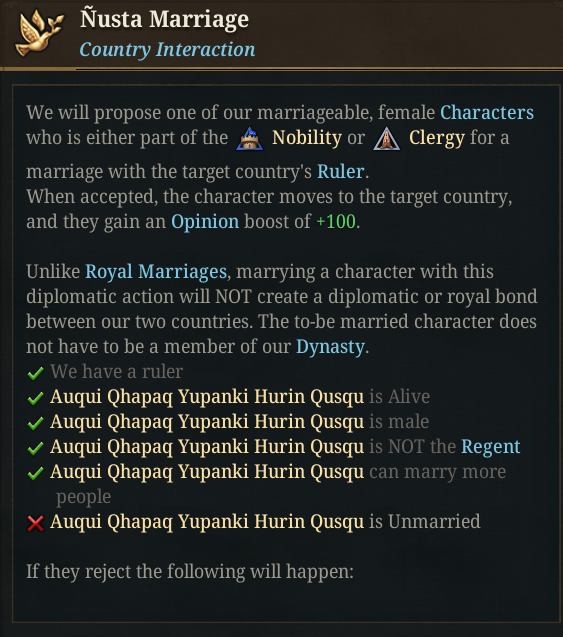

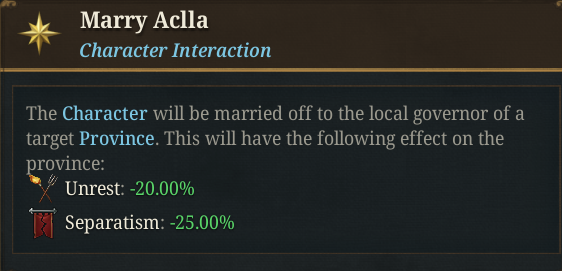
There’s a Cabinet Action that can be used to recruit Acllas, the characters you may marry through the former actions:

By the way, we already reworked the marriage unlocked by the Inti religion that we presented on Wednesday, and it is a new Marriage Policy, ‘Polygyny’:
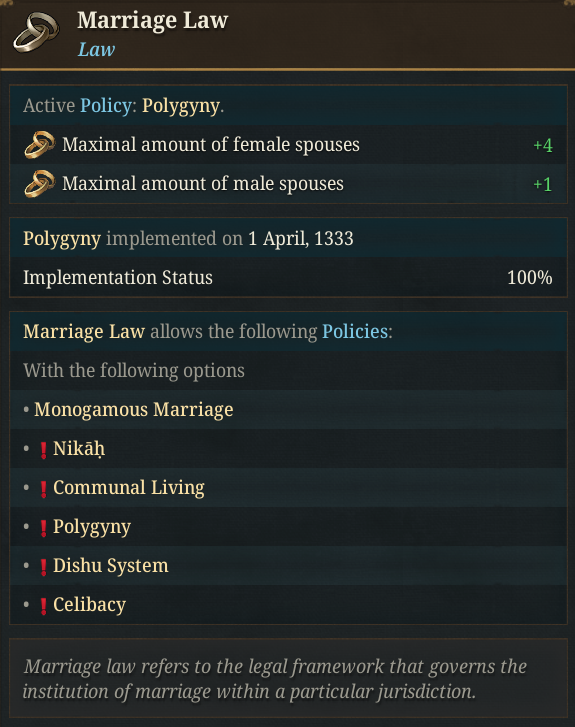
This policy is set to fit and work along with the Ñusta Marriage and Aclla Recruitment, so Andean countries can set strong diplomatic bonds among them, if they wish.
Andean countries also have a unique privilege available at start, the Mit’a System:
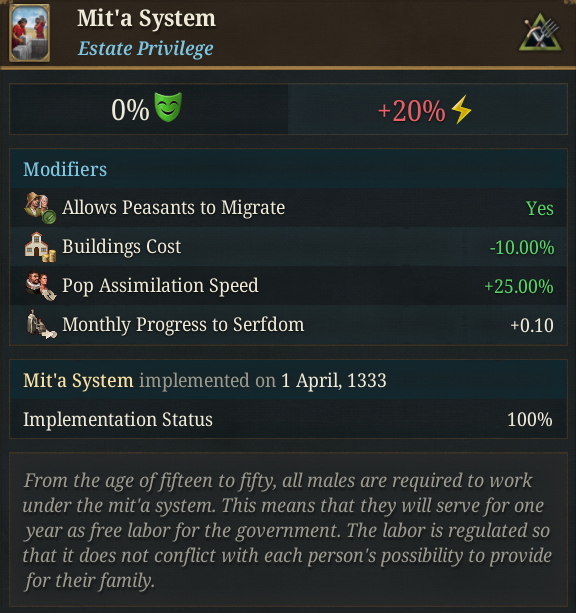
Andean countries also have several unique buildings that are unlocked by some advances available in the Age of Traditions:
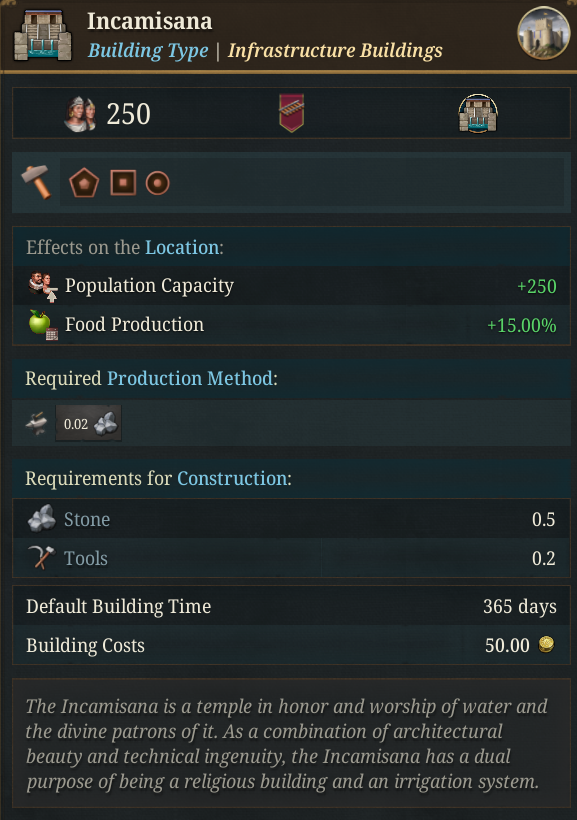

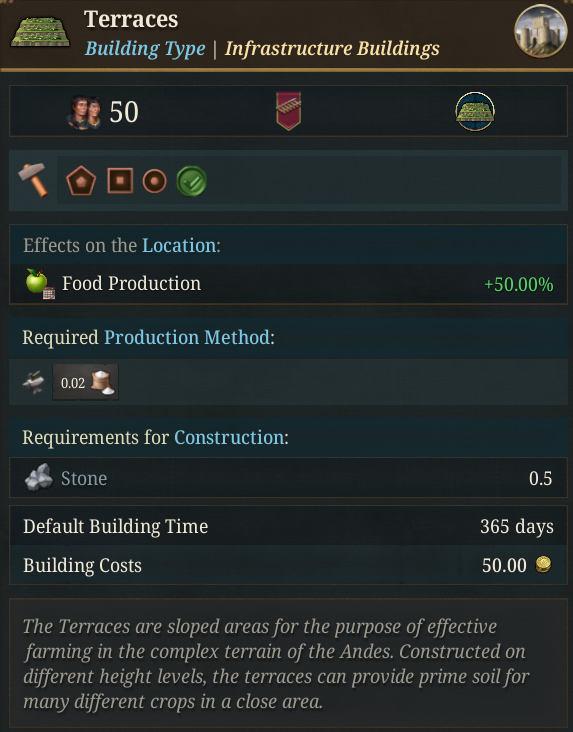
Let’s now take a look at some of the unique advances available for Qusqu:
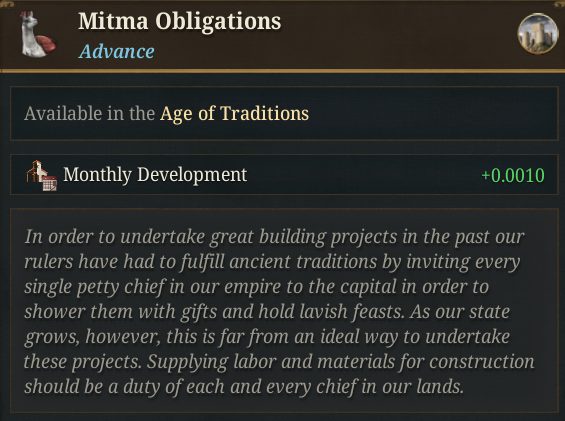
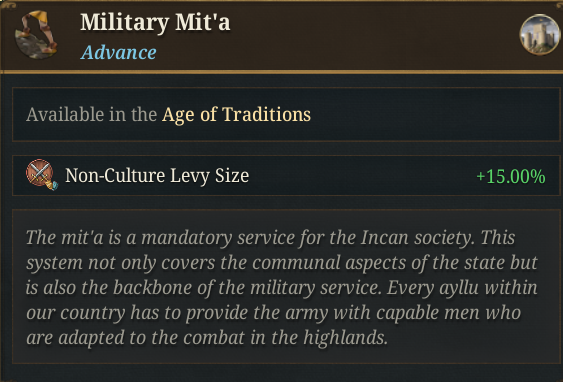
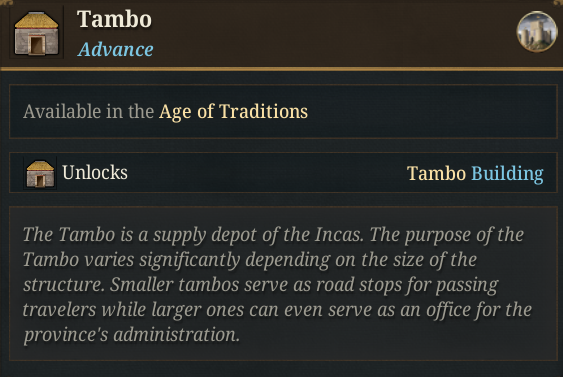
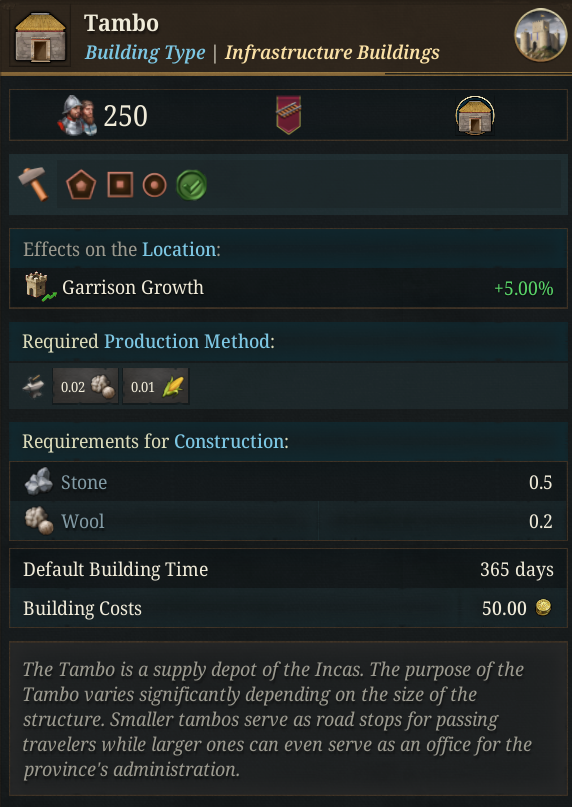
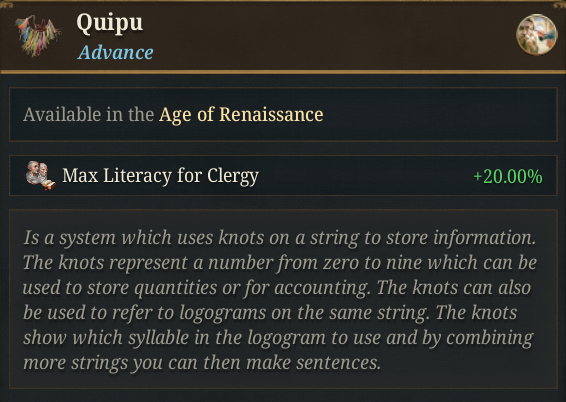
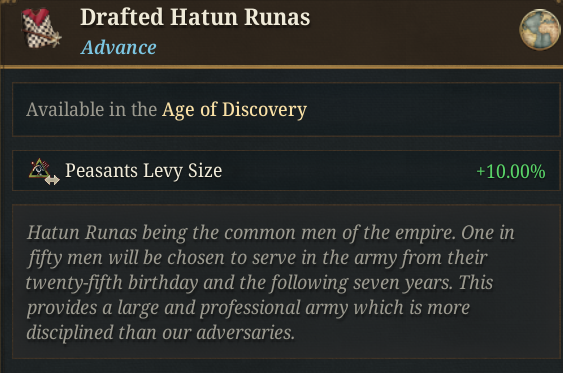
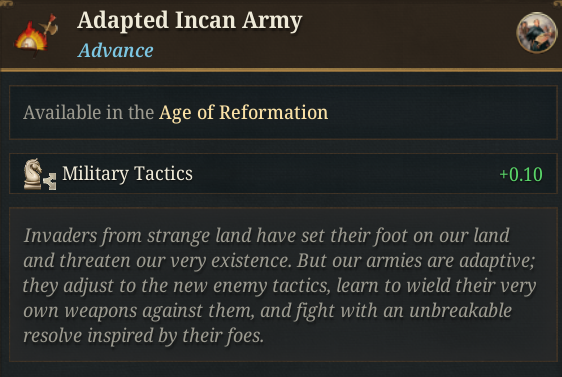
But wait, so far, we’ve talked about Qusqu, but not about Inca, which was the supposed topic of the Tinto Flavour. That is because it is another piece of content for today, the formable Inca Empire:
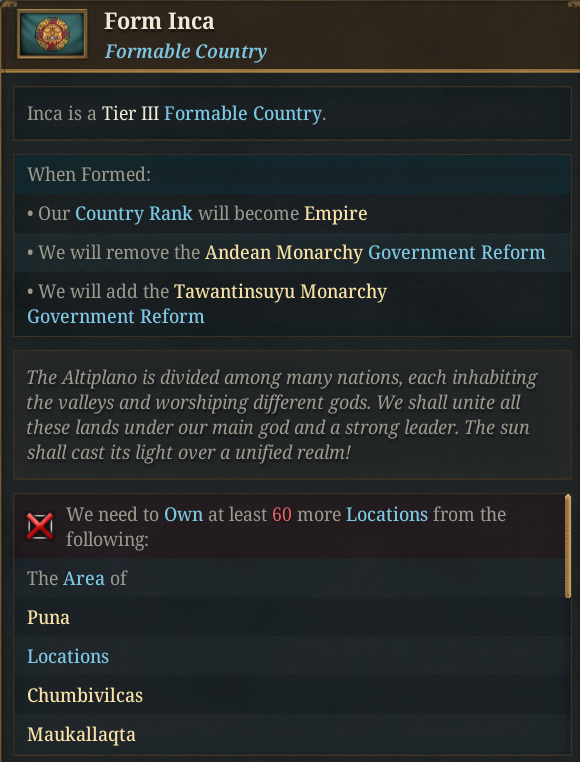
Qusqu starts with 2 locations, and may have to grow up to 62 to be able to form the Inca Empire… So, yeah, a challenging ‘rags to riches’ campaign.
As you see, if you form it, you’ll get a new government reform that will replace the Andean Monarchy, which is the Tawantinsuyu Monarchy:
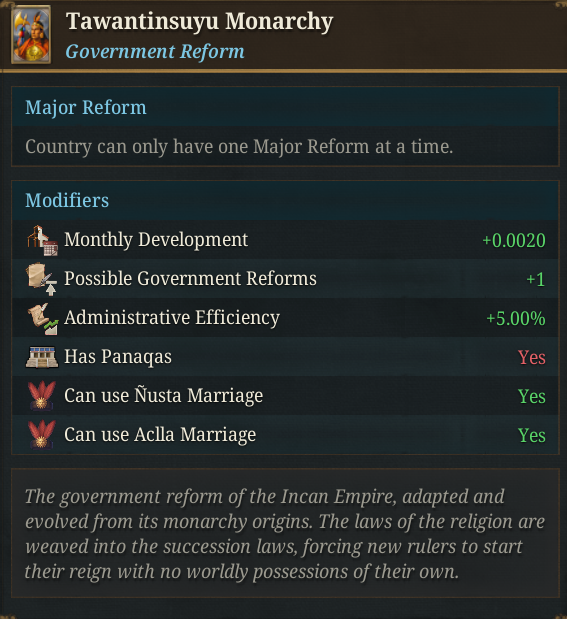
So, as you can see, much of the content available for Qusqu is based on mechanics. However, it still has some events to play with:
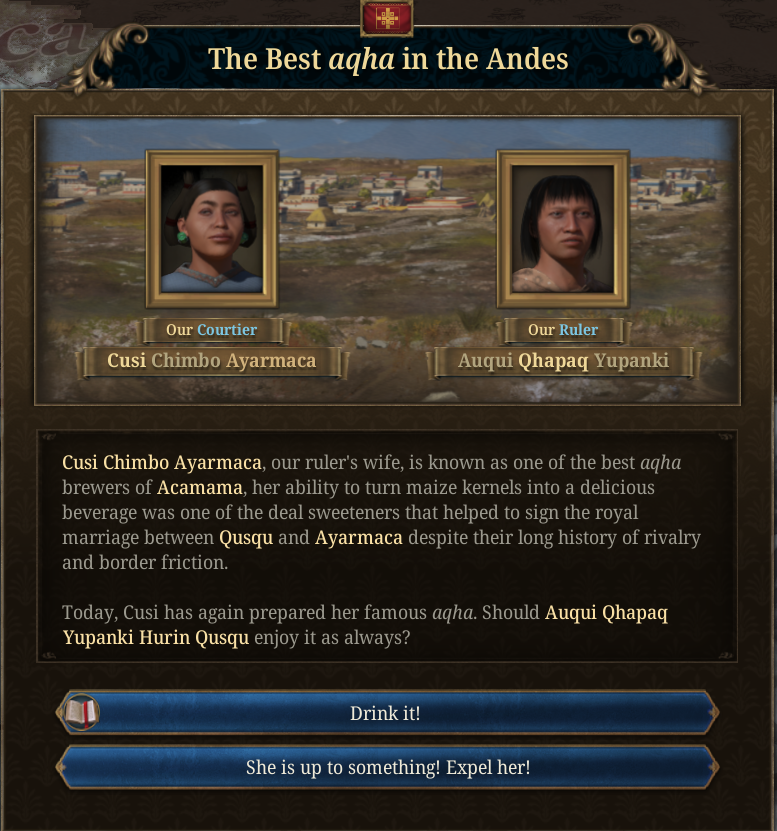
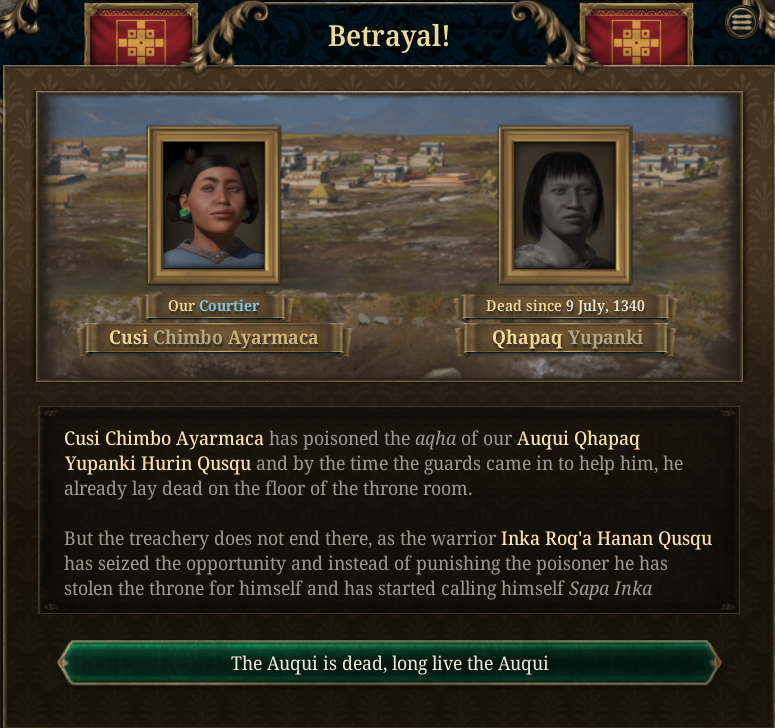
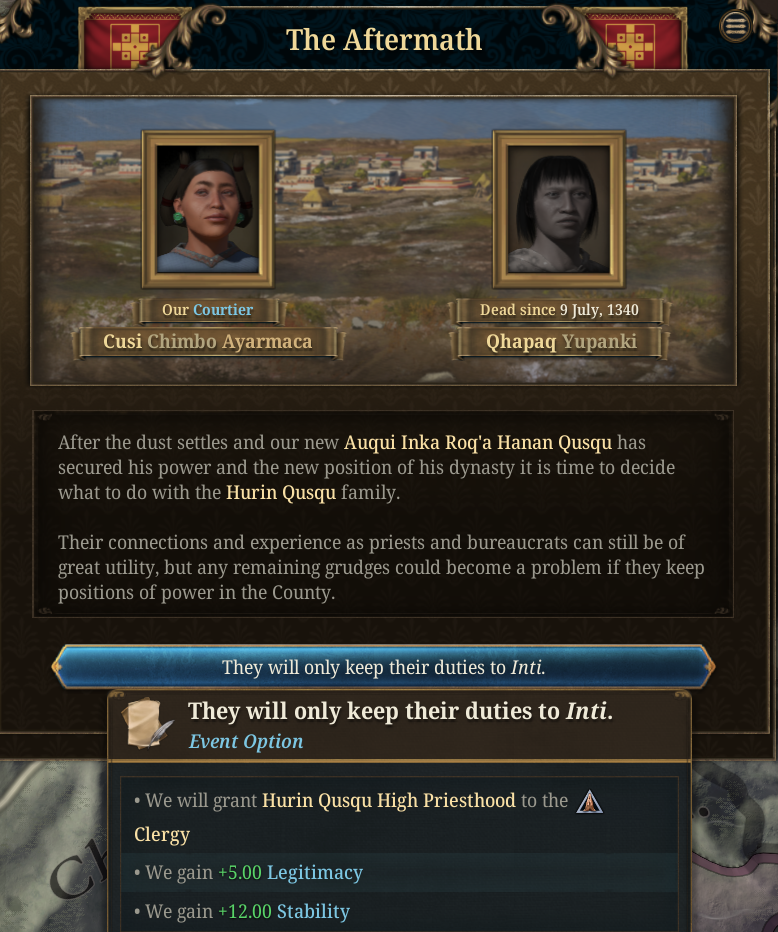
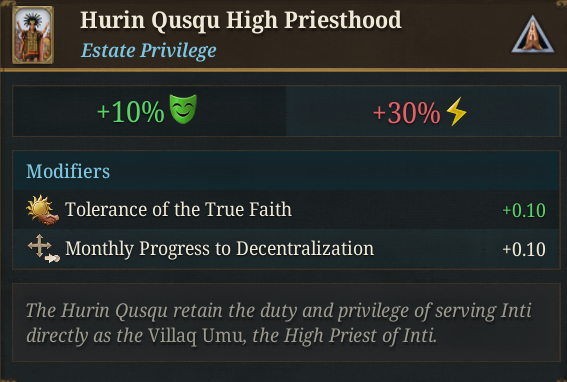
… And much more, but that’s all for today! Next week we’ll have a Tinto Maps Feedback on Monday, a Tinto Talks on Wednesday, and Tinto Flavour on Friday; @Roger Corominas will host all of them, as I’ll be off the entire week:
Today, we will take a look at the flavour content for the Inca! Let’s start without further ado:

As usual, please consider all UI, 2D and 3D Art as WIP.


Qusqu has a quite unique start, in the middle of the Andes.
Let’s start by taking a look at the Estates panel, as usual. The countries of the region, including Qusqu, start with a unique government reform:

As you see, it unlocks a bunch of mechanics. The first is the Panaqas:


Numbers are subject to balance and change, as usual.
They are instantly built at the death of the ruler, by this event:

As you see, Panaqas are a double-edged sword: they increase the Levy Size, but their cost is removing the Crown Power from the location they’re built in. Therefore, they might potentially be very good buildings for locations distant from the capital, where you have low control, while being very negative for those locations close to your capital. They can be removed, though, by paying a cost of 10 Legitimacy.
The other two Actions unlocked by the Andean Monarchy reform are connected:




There’s a Cabinet Action that can be used to recruit Acllas, the characters you may marry through the former actions:

By the way, we already reworked the marriage unlocked by the Inti religion that we presented on Wednesday, and it is a new Marriage Policy, ‘Polygyny’:

This policy is set to fit and work along with the Ñusta Marriage and Aclla Recruitment, so Andean countries can set strong diplomatic bonds among them, if they wish.
Andean countries also have a unique privilege available at start, the Mit’a System:

Andean countries also have several unique buildings that are unlocked by some advances available in the Age of Traditions:



Let’s now take a look at some of the unique advances available for Qusqu:







But wait, so far, we’ve talked about Qusqu, but not about Inca, which was the supposed topic of the Tinto Flavour. That is because it is another piece of content for today, the formable Inca Empire:

Qusqu starts with 2 locations, and may have to grow up to 62 to be able to form the Inca Empire… So, yeah, a challenging ‘rags to riches’ campaign.
As you see, if you form it, you’ll get a new government reform that will replace the Andean Monarchy, which is the Tawantinsuyu Monarchy:

So, as you can see, much of the content available for Qusqu is based on mechanics. However, it still has some events to play with:




… And much more, but that’s all for today! Next week we’ll have a Tinto Maps Feedback on Monday, a Tinto Talks on Wednesday, and Tinto Flavour on Friday; @Roger Corominas will host all of them, as I’ll be off the entire week:
- Monday -> Tinto Maps Feedback for China
- Wednesday -> Tinto Talks about the mechanics for the Middle Kingdom, the Chinese Empire IO!
- Friday -> Tinto Flavour about China




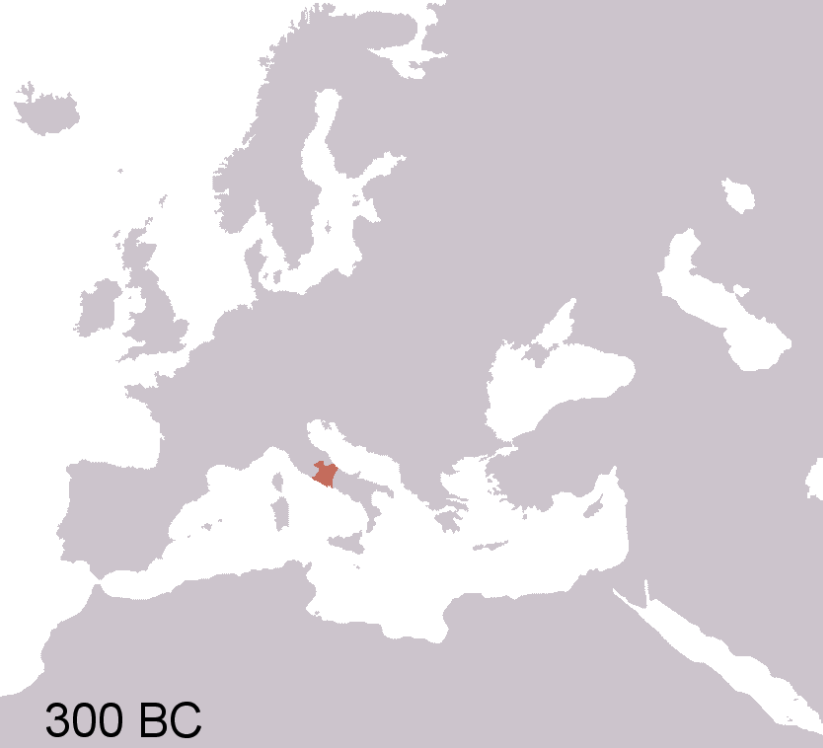
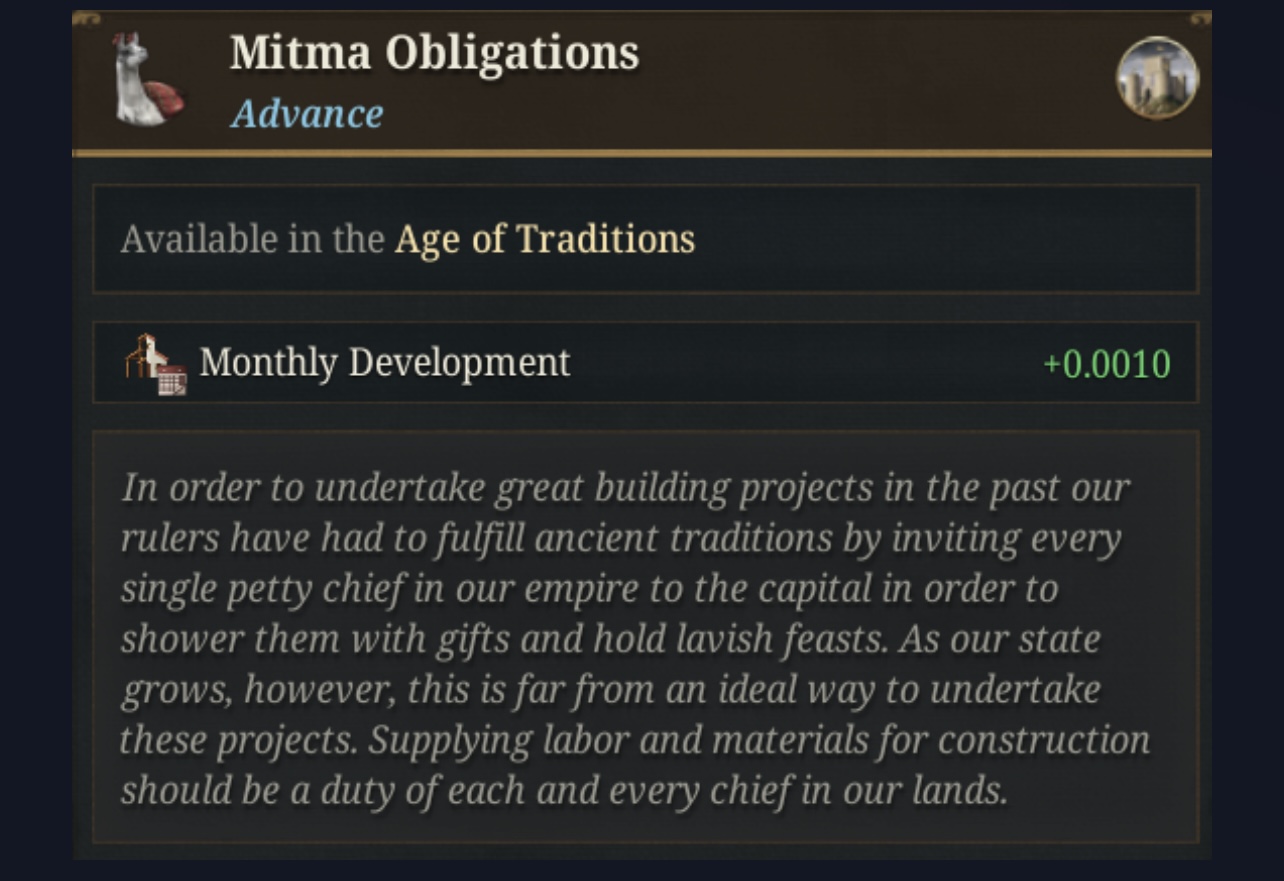
.png)

